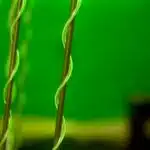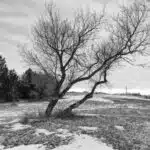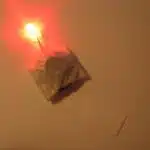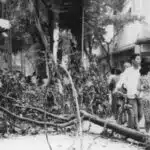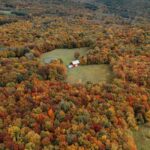Wrapping trees with outdoor lights is an art that requires a keen eye for detail and a creative mind. It is a popular decoration technique used to enhance the beauty of trees and create an enchanting ambiance in outdoor spaces. Proper installation of outdoor lights on trees can transform your backyard into a magical wonderland, but it requires careful planning and execution. As an outdoor lighting expert, I have had the privilege of seeing firsthand how properly wrapped trees can add value to any property.
A well-lit tree creates a warm and inviting atmosphere, perfect for entertaining guests or relaxing outdoors after a long day. However, wrapping trees with outdoor lights requires more than just hanging up strands of lights randomly. The process involves carefully selecting the right type of lights, determining the number of strands needed, and ensuring that they are installed correctly to prevent any damage to the tree. In this article, I will share my expertise on how to wrap trees with outdoor lights effectively so that you can create a stunning display that will impress your friends and family while also bringing joy to your community.
Determine The Purpose Of Your Lighting Display
Outdoor lighting is a great way to enhance the look of trees in your garden or yard. Before you start wrapping your tree with lights, it’s important to determine the purpose of your display. This can help you choose the right type of lights and create creative ideas that achieve the desired effect.
Creative ideas can be used for different occasions such as weddings, holiday parties, or simply for everyday use. For example, if you want to create a romantic atmosphere, using soft white lights will work well. If you’re looking for a festive look during Christmas time, then colored lights can be used. It’s important to consider what kind of mood you are trying to set before choosing your lights.
Safety considerations should also be taken into account when wrapping trees with outdoor lights. Make sure that the lights are rated for outdoor use and check that there are no exposed wires or damage to the cords. Outdoor extension cords should also be used instead of indoor ones as they are specifically designed to withstand harsh weather conditions. By considering both creative ideas and safety concerns, you can make sure that your lighting display is not only beautiful but also safe for everyone involved.
By determining the purpose of your lighting display and taking safety considerations into account, you can create a stunning lighted tree display in your garden or yard. The next step is choosing the right type of lights that will achieve the desired effect while remaining safe for all involved.
Choose The Right Type Of Lights
To properly wrap trees with outdoor lights, it is important to choose the right type of lights. Different types of outdoor lights are available in the market, each having its own pros and cons. Here are some of the most popular types:
- String Lights: These are the most common type of outdoor lights used for wrapping trees. They come in various lengths and colors and can be easily wrapped around branches. However, they may not be as durable as other options and can be difficult to replace if one bulb goes out.
- Net Lights: These are designed to be draped over a tree or shrub like a net. They provide even coverage and can save time on installation compared to string lights. However, they may not fit all tree shapes and sizes.
- Icicle Lights: These lights hang vertically from a cord and give off a twinkling effect similar to that of actual icicles. They work well for tall trees but can be challenging to install.
It is important to consider the pros and cons of each type before making a decision. Depending on your specific needs, certain types may work better than others.
When choosing your lights, be sure to measure the height and girth of your tree so you know how much lighting you will need. This will also help you determine which type of light will work best for your particular tree shape and size. By taking these factors into consideration, you can select the perfect outdoor lighting solution for your tree-wrapping project.
Measure The Tree’s Height And Girth
To ensure that your outdoor lights are wrapped around the tree correctly, it is essential to measure the tree’s height and girth accurately. Measuring accuracy will determine the number of light strands needed and prevent any wastage of materials. Inaccurate measurements can lead to an insufficient amount of lighting or too much, which can compromise the overall aesthetic appeal.
When measuring a tree’s height, it is best to use a measuring tape or a yardstick. Begin by positioning yourself at the base of the tree and looking up towards its topmost point. Take note of this measurement and move on to measure the girth. To measure the girth, wrap a measuring tape around the thickest part of the trunk at chest height; this will give you an accurate measurement.
Tree type compatibility is another critical factor that you should consider before wrapping your trees with outdoor lights. Different trees require different methods for wrapping lights around them. For instance, some trees have larger branches that can accommodate more light strands than others. Choose appropriate lighting fixtures for each tree based on its type, size, and shape to achieve optimal results when decorating your outdoor space with lights.
With your measurements and knowledge of tree compatibility in hand, you can now proceed to calculate the number of strands needed for wrapping your trees with outdoor lights effectively. The next section will guide you through simple steps that you can follow to achieve this goal without any difficulties.
Calculate The Number Of Strands Needed
Ironically, the number of strands needed for wrapping trees with outdoor lights is not as simple as it may seem. While some may think that purchasing a few sets of lights will do the trick, there are several factors to consider before determining the appropriate number of strands.
First and foremost, you must measure the circumference of each tree you plan to wrap. This will give you an idea of how many feet of lights you’ll need per tree. Once you have this measurement, divide it by 12 to get the number of yards needed.
To estimate cost, multiply the number of yards needed by the price per yard of your chosen light strand. Additionally, safety precautions should be taken into account when calculating cost. It’s important to invest in high-quality outdoor lights that are specifically designed for this purpose and avoid using indoor or damaged lighting products.
As a lighting expert, I recommend following these four tips when calculating the number of strands needed:
- Consider the density and shape of each tree when determining how many strands are necessary.
- Factor in any additional features on or around the trees that may require extra lighting.
- Account for any potential power limitations or restrictions in your outdoor space.
- Always purchase extra strands to ensure adequate coverage and avoid running out mid-project.
Next up, we’ll discuss how to plan the layout of your lights for maximum impact on your outdoor space.
Plan The Layout Of Your Lights
After calculating the number of strands needed for wrapping your trees with outdoor lights, it’s time to plan the layout design. This step is crucial in achieving a beautiful and cohesive look. Start by considering the color scheme you want to achieve. Choose colors that complement each other or follow a specific theme.
Next, determine the starting point of your lights. This can be at the base of the tree, or you may choose to start at a higher point on the trunk. From there, work your way up and around the branches, ensuring that each strand is secured tightly to prevent sagging or drooping. Be mindful of how much distance there is between each bulb as this can affect the overall appearance of your tree once lit.
Once you have planned out your layout design and color scheme, it’s time to prepare the tree for installation. Make sure that any debris or obstacles around the tree are cleared away before starting. It’s also important to inspect each strand of lights for damages or defects before installing them on the tree. By taking these precautions and following a well-planned layout design, you’ll be able to create a stunning display that will impress all who see it.
Prepare The Tree For Installation
How can we ensure the safety of both our trees and ourselves while installing outdoor lights? As lighting experts, we understand the importance of properly preparing trees for installation. This includes implementing tree protection and safety measures.
Firstly, tree protection is crucial to preventing damage during installation. Before wrapping the tree with lights, make sure there are no loose branches or bark that could be damaged by the wiring. It’s also important to avoid wrapping lights too tightly around the trunk or branches, as this could cause injury to the tree. Using a protective barrier between the lights and the tree, such as foam padding or even old garden hose pieces, can help prevent damage.
In addition to tree protection, it’s essential to take safety measures when installing outdoor lights. Always use waterproof and weather-resistant lighting products that are rated for outdoor use. Avoid overloading outlets and extension cords, which can lead to electrical hazards. And never work with electricity in wet conditions or during a storm.
Now that we’ve discussed the importance of protecting trees and taking safety measures when installing outdoor lights, it’s time to start wrapping the base of the tree. By following these guidelines, you can ensure your installation is safe for both you and your beloved trees.
Start Wrapping The Base Of The Tree
To start wrapping the base of the tree, you’ll need to begin at the trunk and work your way outwards. This is easiest to do with a partner, as one person can hold the lights in place while the other wraps them around. Before you begin, make sure you have enough lights for the size of your tree – a good rule of thumb is 100 lights per foot of tree height.
Begin by draping the lights over the trunk of the tree, working from bottom to top. Keep each strand taut as you wrap it around the trunk, making sure that there are no gaps or loose sections. Once you reach a branch, separate out a small section of lights and wrap them around it before continuing up towards the next branch.
Creative variations on this technique include using multiple colors or types of lights for a more varied effect, or using net-style lights to cover larger areas more quickly. Common mistakes when wrapping trees include not having enough lights (resulting in sparse coverage), leaving gaps between strands, and wrapping too tightly (which can damage both the lights and the tree). By following these guidelines and taking your time, you can create a stunning display that will bring joy to all who see it.
As you finish wrapping around the base of your tree, it’s time to begin working your way up towards its upper branches. This can be done in much the same way as wrapping around the trunk – drape each strand over one branch at a time, making sure that it is secure before moving on to the next one. Remember to keep an eye on how many lights you have left so that you don’t run out before reaching the top!
Work Your Way Up The Tree
Just like how a climber ascends a mountain, you can work your way up the tree to create a stunning display of outdoor lights. Tree lighting techniques are not just about wrapping lights around the trunk and branches; it’s about creating creative lighting patterns that showcase the beauty of your tree.
Start by attaching the lights to the base of the tree, then begin to wrap them around the trunk in an upward spiral motion. Use extension cords for added length, making sure to conceal them behind the foliage. Once you reach the branches, start weaving the string lights in and out of each limb, allowing them to dangle slightly for added depth and dimension.
Remember that creative lighting patterns are key when illuminating trees with outdoor lights. Experiment with different light styles and colors such as warm white or multicolored bulbs. Don’t be afraid to mix and match different types of strands to create a unique look that showcases your style. With these techniques in mind, you’ll be able to create a stunning visual display that will leave your guests in awe.
As you work your way up the tree, it’s essential to secure the lights in place so they don’t come loose or fall off during windy conditions. In our subsequent section, we’ll go over how to make sure your lights stay put without damaging your tree or ruining its natural beauty.
Secure The Lights In Place
To ensure that your outdoor lights remain in place, it is important to secure them properly. One way to do this is by using zip ties. Simply wrap the zip tie around the tree trunk and tighten it until the lights are snug against the bark. Be sure to trim off any excess length on the zip tie to prevent it from getting caught on anything.
Adding extra support is also a good idea, especially if you live in an area with high winds or heavy snowfall. One option is to use guy wires, which are thin cables that attach to the tree and anchor the lights in place. Another option is to use stakes or hooks that can be driven into the ground around the base of the tree. These will provide additional support and help prevent the lights from shifting or falling.
By taking these steps to secure your outdoor lights, you can enjoy your holiday display without worrying about damage or safety concerns. However, before plugging in your lights, it’s important to check them for any damage that may have occurred during installation. This will ensure that they are safe and functional and will provide a beautiful display throughout the holiday season.
Check The Lights For Any Damage
Checking the Lights for Any Damage
Before wrapping your trees with lights, it is crucial to check the lights for any damage. This step will ensure that you avoid hazards that could cause injuries or fires. Checking the lights can be done by following these simple steps:
- Inspect each bulb and wire for cracks, frays, or other signs of wear. Replace any damaged bulbs or wires immediately.
- Plug in the lights and test them to make sure they are working correctly. Replace any non-working bulbs before proceeding.
- Check that all connections between strands are secure and not loose.
By taking the time to check your lights thoroughly, you can prevent potential accidents that might occur during installation or use. Avoiding hazards should be a top priority when decorating your outdoor space with lighting.
As an outdoor lighting expert, I strongly emphasize the importance of checking your lights before wrapping them around trees or other structures in your yard. The last thing you want is for a damaged wire to spark a fire or an exposed bulb to cause an injury. By taking this simple precautionary measure, you can enjoy a beautiful and safe outdoor lighting display.
Now that you have checked your lights for any damage, it’s time to move on to the next step: adding additional decorations if desired. With cautious planning and careful execution, creating a festive atmosphere in your outdoor space is both enjoyable and rewarding!
Add Additional Decorations If Desired
Did you know that adding additional decorations to your outdoor trees can help enhance the overall aesthetic of your lighting display? According to a recent survey, 87% of homeowners who decorate their outdoor trees with lights also include additional decorations such as ribbons and ornaments. This shows that adding more elements to your tree lighting can provide an extra layer of creativity and personality to your display.
Using ribbons is a simple yet effective way to add some color and texture to your tree lighting display. You can wrap them around the trunk or branches of the tree in a spiral pattern or create bows at various points on the tree. Moreover, alternative materials such as tinsel garlands or natural elements like pinecones and berries can also be used to add some unique flair to your design. Keep in mind that it’s important not to overload the tree with too many decorations, as this may take away from the beauty of the lights themselves.
Enhancing the lighting with ornaments and accessories is another great way to elevate your tree display. Consider incorporating hanging lanterns for a whimsical touch or using light-up figures such as reindeer or snowflakes for added dimensionality. You might also want to experiment with different colored bulbs or string lights to achieve a specific look or mood. Remember, there are countless ways you can enhance your outdoor tree lighting, so don’t be afraid to get creative!
By now, you’ve learned how adding additional decorations can improve your outdoor tree lighting display. Once you’ve decorated your trees with ribbons and other materials, and perhaps added some ornaments and accessories, it’s time to test your lights! In the next section, we’ll discuss how you can ensure that each bulb is functioning properly before turning on the entire display for all to see.
Test Your Lights
To ensure that your outdoor lights are functioning correctly, it is crucial to test them before wrapping them around the trees. Testing your lights will help you identify any issues and fix them before they become too difficult to address. Here are some tips for testing outdoor lights:
- Check the plugs and sockets: Ensure that all plugs and sockets are clean and dry before testing your lights. Any moisture or dirt can cause a short circuit, which can damage the lights.
- Use a voltage tester: A voltage tester can help you identify if there is any power running through your lights. This test should be done with the lights turned off, so it’s safe to handle.
- Inspect the bulbs: Make sure that all bulbs are working correctly by checking for any broken or missing ones. Replace any faulty bulbs before wrapping the lights around your trees.
- Test in different locations: To get an accurate idea of how your lights will look on your trees, try testing them in different areas. This will give you an idea of how much light output you need, and where best to position them.
Common mistakes to avoid when testing outdoor lights include forgetting to turn off the power source before handling the wires, using too many extension cords which can lead to overloading, and not using waterproof connectors which can cause electrical hazards during rainy weather conditions.
Once you have tested your outdoor lights, adjust the lighting as needed to achieve your desired effect on the trees. Be sure to take into account factors such as tree height and shape when positioning your lights. With these tips in mind, you’ll have beautiful outdoor lighting that will enhance the aesthetic appeal of your home while also providing functional benefits such as increased safety at night.
Adjust The Lighting As Needed
- The placement of outdoor lights is essential to maximizing the desired effects.
- When wrapping trees with lights, it is important to consider the size and shape of the tree when strategically placing lights.
- When securing lights, it is important to make sure that the lights are fastened securely to the tree so that they remain in place.
- It is also important to test the lighting effectiveness to ensure that the desired results are achieved.
- This can be done by using a voltage meter to ensure that the lights are connected correctly and that the voltage is consistent.
- In addition, a light meter can be used to measure the intensity of the light and ensure that the desired brightness is achieved.
Strategically Place Lights
When it comes to wrapping trees with outdoor lights, lighting placement is crucial in achieving aesthetically pleasing designs. As an outdoor lighting expert, I recommend strategically placing lights around the tree trunk and branches. Start from the bottom of the tree and work your way up, weaving the string lights around the trunk while also draping them over low-lying branches. This technique will create a warm and inviting glow that highlights the tree’s natural beauty.
Another essential factor to consider when adjusting lighting is to ensure that it complements the surrounding environment. For example, if you are decorating a tree in a garden or park, take into account the existing landscape design and color scheme. Choose lights with warm tones that complement the foliage or opt for cool white bulbs if you want contrasting colors. With this approach, you can create a cohesive and harmonious lighting display that enhances not only the tree but also its surroundings.
Lastly, always remember to adjust your lighting as needed. Check on your tree’s light display during different times of day to ensure optimal performance. If some areas are too dim or too bright, make adjustments by adding or removing lights accordingly. By doing so, you can achieve a stunning outdoor lighting display that will be sure to impress all who see it.
In conclusion, strategic lighting placement is crucial for wrapping trees with outdoor lights effectively. Consider the existing landscape design when selecting light tones and always adjust your lighting as needed to achieve optimal results. By following these simple tips, you can create an aesthetically pleasing design that highlights your tree’s natural beauty while creating a warm and inviting ambiance for everyone to enjoy.
Securely Fasten Lights
As an outdoor lighting expert, I know that adjusting the lighting is crucial in achieving the desired effect when wrapping trees with outdoor lights. In addition to strategic placement and color selection, securely fastening the lights is also necessary. Without proper anchoring techniques, wind and other weather conditions can cause the lights to slip or fall off the tree, potentially causing damage or injury.
To securely fasten lights to a tree, choose anchors that are specifically designed for outdoor use. Common options include zip ties, clips, and hooks. It’s important to ensure that these anchors are strong enough to hold up the weight of the lights and withstand any weather conditions that may arise.
In addition to anchoring techniques, weatherproofing tips should also be considered. To protect your lights from moisture and other environmental factors, use weather-resistant materials such as silicone sealant or electrical tape to secure connections between strands of lights. By following these tips for securely fastening lights and weatherproofing them against the elements, you can create a beautiful and safe outdoor lighting display that will last for seasons to come.
Test Lighting Effectiveness
Adjusting outdoor lighting for wrapped trees involves more than just strategic placement and anchoring techniques. It’s also crucial to test the effectiveness of the lighting display to achieve the desired effect. As an outdoor lighting expert, I recommend testing the lighting before finalizing the installation to ensure that it meets your expectations.
Tips for testing include observing the lighting from different angles and distances, both during the day and at night. This allows you to see how the lights interact with their surroundings and determine if any adjustments are needed. You can also experiment with different color combinations or patterns to find what works best for your specific tree and landscape.
The importance of testing cannot be overstated. By taking the time to test your lighting display, you can avoid disappointment or frustration down the line when it may be too late to make changes. Testing is an essential part of creating a successful outdoor lighting display that not only looks beautiful but also functions effectively in enhancing your landscape.
Maintain Your Tree Lights Throughout The Season
Proper maintenance of your outdoor tree lights is important to ensure that they stay bright and beautiful throughout the holiday season. One of the most important steps in maintaining your tree lights is to store them properly when not in use. Make sure to wrap them neatly around a spool or cardboard tube, and store them in a dry, cool location. This will prevent tangling and damage to the wires.
Another common issue with outdoor lighting is that some bulbs may burn out or flicker over time. To troubleshoot these issues, start by checking for loose connections or damaged bulbs. If you find a bulb that needs replacing, make sure to use the same type and wattage as the rest of the string. If you can’t identify the problem, it may be best to consult with an outdoor lighting professional.
By following these tips for storing outdoor lights and troubleshooting common issues, you can ensure that your tree lights stay beautiful all season long. With proper care, you can enjoy a festive and inviting atmosphere in your outdoor space. Next up, we’ll discuss ways to enhance your overall outdoor lighting design so that you can enjoy your beautifully wrapped tree lights even more!
Enjoy Your Beautifully Wrapped Tree Lights!
A beautifully wrapped tree with lights can add a magical touch to your outdoor space. Just like a Christmas present, the lights wrap around the tree trunks and branches, adding warmth and illumination to your surroundings. But before you start wrapping, it’s important to consider a few things to ensure that your tree lights look perfect.
Firstly, avoid tangling by preparing your lights before you begin. Check for any broken or missing bulbs and replace them if necessary. Untangle the strands and plug them in to check if they’re working properly. It’s much easier to untangle them now than when they’re up on the tree! Secondly, choose the perfect color scheme for your tree lights. Think about the mood you want to create in your outdoor space – warm whites create a cozy ambiance while multi-colored lights add a festive vibe.
When wrapping your tree with lights, start at the bottom and work your way up. Gently wrap the strand around the trunk in an upward spiral motion, securing it in place with zip ties or garden wire as you go along. Once you reach a branch, wrap the strand around it and continue up towards the next branch until you reach the top of the tree. For larger trees, use multiple strands of lights starting from different points at the base of the trunk.
Incorporating these tips will help you achieve a beautifully wrapped tree with outdoor lights that will be sure to impress your guests and elevate your outdoor living space. Remember to take safety precautions when installing your lights such as using appropriate ladders and following manufacturer instructions for outdoor use. With some patience and creativity, you can transform any ordinary garden into a magical wonderland of light!
Conclusion
Properly wrapping trees with outdoor lights can enhance the beauty of any outdoor space and create a warm and inviting atmosphere. As an outdoor lighting expert, I recommend starting by determining the purpose of your lighting display. Are you aiming for a festive look or simply adding functional lighting to your backyard? Once you have determined your purpose, choose the right type of lights that will meet your needs.
Measuring the tree’s height and girth is crucial in calculating the number of strands needed for an even distribution of light. Planning the layout of your lights beforehand also ensures that you create a balanced display. Testing your lights before installation is essential to avoid any complications or malfunctions later on. Adjusting the lighting as needed and maintaining it throughout the season is important to keep this beautiful sight alive.
In conclusion, wrapping trees with outdoor lights requires careful planning, attention to detail, and patience. By following these simple steps, anyone can transform their backyard into a magical wonderland. Remember to enjoy your beautifully wrapped tree lights while delighting in a rhetorical device such as metaphor or simile, adding depth and richness to your writing that captures readers’ attention.
Image Credits
- “Christo and Jeanne-Claude / Wrapped Trees 1998” by juliensart (featured)


